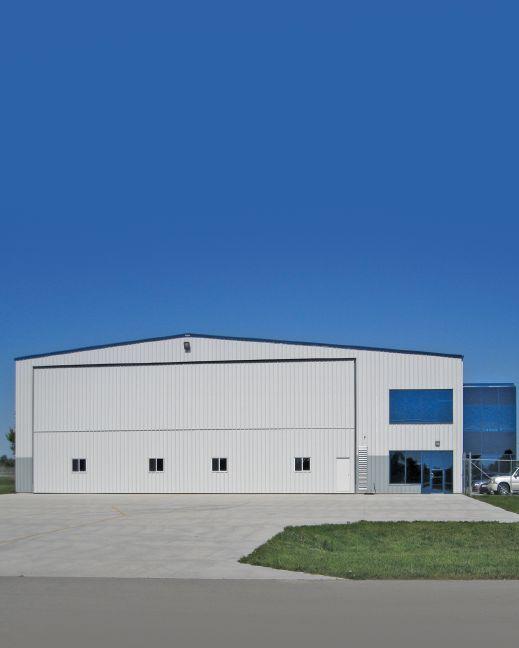
By John Gradek |


By John Gradek |
What Lynx Air’s failure tells us about the state of commercial aviation
Lynx Air is the latest in a long line of low-cost airlines to fail in Canada. The airline ceased operations on Feb. 26, four days after announcing it had entered creditor protection. Over the last 30 years, carriers such as Canada 3000, Nationair, Greyhound Air, Roots Air and SkyService have all succumbed to some form of financial duress and have disappeared from the Canadian discount carrier scene.
The closure of Lynx provides us with an opportune time to review the state of Canadian commercial air travel and identify the challenges and opportunities Canada has in maintaining, and possibly improving, the sustainability of the sector.
For several weeks in early 2024, speculation was rampant that a merger between Flair Airlines and Lynx was close. This would have meant Canadian air travellers seeking low airfares would face an uncertain future with one fewer ultra-low-cost carrier. The circumstances surrounding the financial state of Lynx – a private company not required to publicly disclose its operating and financial performance – were cited as the principal drivers of the situation.
One would normally expect the firm that was rumoured to be acquiring Lynx to be able to address any and all financial considerations of the merger. But Flair seemed to have financial and legal issues of its own, ranging from corporate governance to finances. The merger failed to be consummated and numerous claims contained in Lynx court documents pointed to the need to repay one of Lynx’s shareholders’ debt.
In short, there were two financially weak airlines attempting to consolidate, with neither having sufficient financial strength to complete the merger. Lynx prepared its bankruptcy filing in short order, as it was also experiencing significant financial stress.
Airline entrepreneurs that launch discount carriers are driven by the belief that the success of their airlines is closely tied to their ability to attract a substantial number of passengers. They aim to stimulate travel demand and maintain their competitive stance in the markets they serve.
A common element among most of these entrepreneurial-focused airlines has been

to use pricing as a key tactic for market stimulation and capture.
Throughout most of 2022 and early 2023, Lynx and Flair were price leaders in North America, sometimes by significant margins. They primarily competed with one another, introducing new services across Canada and the U.S., creating demand. But this price competition did not create enough revenue to generate even marginal profitability. The established airline duopoly in Canada – Air Canada and WestJet – did not actively respond to these price initiatives, as they were occupied with rebuilding their capacities following COVID-related layoffs.
In the fall of 2023, after the absorption of Swoop and Sunwing into the WestJet family, both WestJet and Air Canada undertook a number of pricing actions. They began offering competitive routes overlapping with Flair and Lynx, which narrowed the price gap among Canadian carriers.
The countdown had begun on the longevity of discount carriers. Lynx ran out of time and money in February 2024. The pricing actions undertaken in fall 2023 seem to point to very specific initiatives designed to lessen the attraction of discount carriers. Despite the power of frequent flyer reward programs and the inclusion of travel elements that are considered ancillary to discount carrier fare offerings, the fear of a recession has significantly lessened the demand for air travel in Canada. Corresponding pricing actions have followed.
The pricing allure of discount carriers faded rapidly and forced them to further reduce airfares to maintain their position in the marketplace. The Canadian government
has steadfastly maintained its belief that the air carrier marketplace should be free of oversight and that carrier survivability is best judged by air travellers themselves.
The time might now be ripe to consider a new regime for managing pricing behaviour among airlines that are pricing below a profitable return. There is also a need to address the actions of WestJet and Air Canada, which have been engaging in aggressive pricing actions aimed at undermining discount carrier sustainability.
An ever-increasing number of potential amendments to the Canadian commercial air travel model have been suggested, most notably those that look to the creation of a civil aviation agency similar to the U.S. Federal Aviation Administration and the U.K. Civil Aviation Authority. This would separate the commercial oversight from the regulatory actions, both of which are currently administered by Transport Canada.
Another opportunity would be to create a regulated airfare pricing regime that would establish floor pricing for discount carriers, as well as pricing limits for larger scheduled carriers competing with discount carriers. This would allow discount carriers the breathing room to offer fares without threat from aggressive pricing actions. The lessons of discount carriers’ failures and the subsequent angst felt by both air travellers and airline staff must be recognized. | W
This article was originally published by The Conversation. John Gradek is a Faculty Lecturer and Academic Program Co-ordinator, Supply Network and Aviation Management, McGill University.


into a parking lot. The logistics of this effort were not for the faint of heart. It included negotiations with the airport owner regarding the amount of liability insurance required to facilitate the aircraft’s move off the property. Bartzis’ dream was to move the aircraft to the Kawartha Lakes Municipal Airport (CNF4) and, in conjunction with Canadian Flyers, bring the aircraft back to an airworthy state with the goal of using the aircraft for IFR flight training.
Bartzis’ vision to refurbish the B19 included: new paint; new interior; new avionics; new glass panel; engine removal and inspection; propeller balancing; overhauling or replacing any time sensitive components; and ensuring that all components were airworthy. Essentially turning the aircraft into a 1976 brand new aircraft. Bartzis’ back of the napkin budget to accomplish the transformation of the aircraft could easily surpass $180,000.
Removing the aircraft from the airport and parking lot was a herculean effort. On March 22, 2024, the aircraft’s flattened tires were filled with air (interestingly, they held air) and it was pulled across the ramp and down the taxiway to an awaiting crane. The aircraft was placed onto a slung and gingerly lifted by the crane. Bartzis reports that the crane rental was approximately $1,000 for the day. Once the Beech was off the airport property and in the parking lot, Matthew Meck began preparing the aircraft for the work to be conducted on the weekend.
On Sunday morning, 11 people gathered to help with preparing the aircraft to be loaded onto a truck, for transportation to CNF4. As it turns out, the Beech is built like a Sherman Tank. After 32 person-hours of labour, the two wings were separated from the aircraft. Another 10 hours of labour was required to remove the horizontal stabilizer and elevator. This was required to fit the fuselage into the truck. Supplemental Type Certificate approved tires were used to support the fuselage while it was in the parking lot. With a lot of tools, ingenuity and muscle energy, the aircraft was moved into the truck shortly after 6:00 pm and began its two-hour journey to CNF4. The team drove to CNF4, following the truck, to remove the aircraft and place it in its temporary location at its new home in Lindsay. Certainly, a very long day for those participating in saving the Beech.
One issue that Bartzis faced was the lack of the Journey Log and the Technical Logs. He was approached by individuals claiming to have access to the logs, but the logs never materialized. After a sober look at the costs and risk of bringing a logbook-less certified aircraft back to flying status, the economic risk was too great. Once in Lindsay, Bartzis removed the cowls and with a sober look at the engine compartment, fuselage and wings determined that there were more issues with the aircraft than originally expected.
Earlier in the process, Bartzis was approached by a salvage broker and their conversation concluded with Bartzis selling the
aircraft. The salvage broker then trailered it back into the Greater Toronto Area to Oshawa Executive Airport (CYOO). Allegedly the aircraft has been sold to an American buyer.
“It would have taken at least two years to bring the aircraft back to flying condition,” says Bartzis. “I would have two years of costs but no fun of flight. I believe that this aircraft project is more suitable to an AME who has the time and resources to bring the aircraft back to flying condition with an economic model that makes sense. I have re-vectored my dream and I’m now pursuing an amphibious aircraft.” The point by Bartzis is that you need to understand your mission and financial resources before jumping into aircraft ownership.
Sadly, Bartzis was not able to realize his dream of bringing the Beach back to flying condition, but perhaps the next carekeeper will realize the dream and bring this aircraft back to flying condition.
As of April 2024, the Buttonville airport property has yet to see any re-development activities. While the runways are closed (XXX), the terminal building, hangars and NAV Canada control tower still stand. With more than 250 aircraft displaced from CYKZ, business operators, aircraft owners and transient aircraft have moved on. With the experiences and memories of operating in and out of Buttonville becoming a distant memory, but not entirely lost.
On March 25, 2024, with Bombardier leaving for a new facility at Pearson (CYYZ), Toronto Downsview (CYZD) has also been closed in the area. The closure of historic airports like Downsview and Buttonville sends a clear message about the importance of aviation infrastructure to municipal, provincial and federal governments.
“Of the 10 original airports first built in Toronto, only two survive,” reports Ken Swartz of the Canadian Aviation Historical Association. With De Havilland Aircraft building a long series of iconic aircraft in Downsview, this national aviation historical site will soon be lost to developer’s bulldozers for all of time. | W

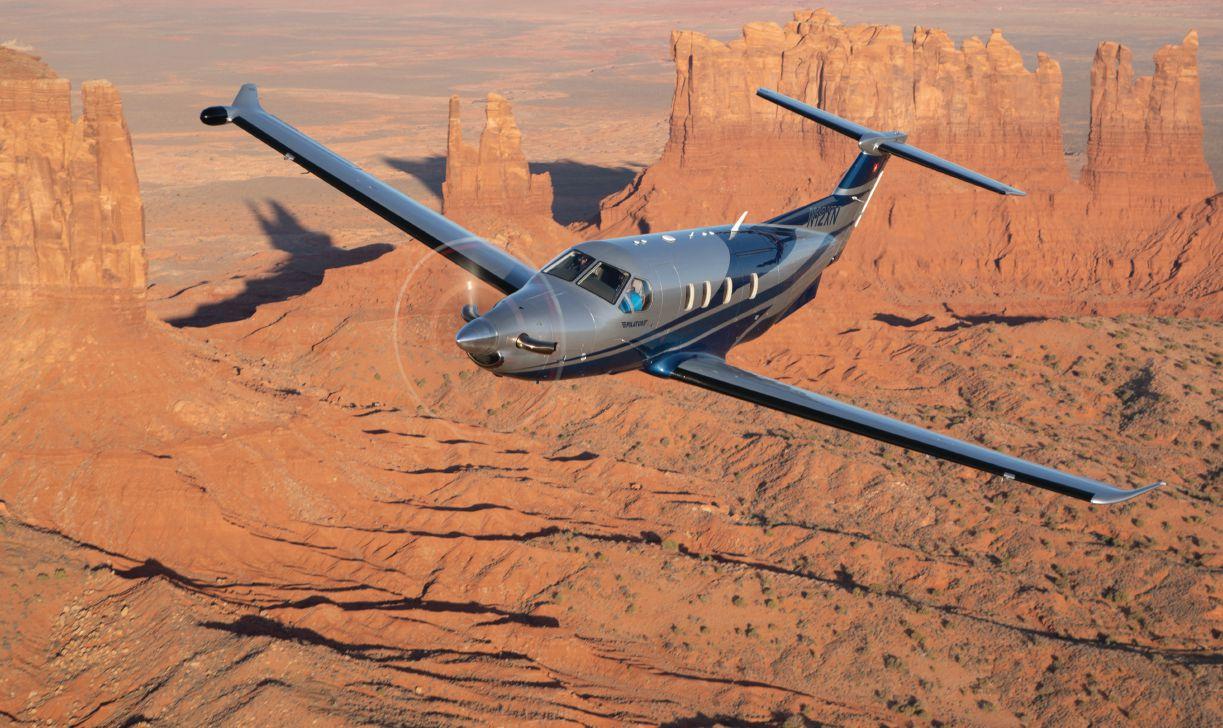
By David Carr
Buying a private airplane is one of the most significant investments a customer will make. In a buyer-beware environment, the best market intelligence and guidance will pay dividends over the long run. Levaero Aviation is a leader in the Canadian corporate aviation market.
The process of purchasing a corporate aircraft is more complex than the purchase of other big-ticket items such as a house. Even then, most buyers would not consider entering the market without the advice of a professional and experienced real estate broker. Buying an aircraft is no different.
“First and foremost, buying an airplane is an investment into your business or personal life, affording you more effective use of your time,” says Stan Kuliavas, Vice President of Sales and Business Development at Levaero Aviation, one of Canada’s largest aircraft brokerages with 26 years of experience buying and selling aircraft around the world. “It requires the same meticulous, strategic approach that goes into making any capital investment.”
Kuliavas says, that even for the most hardened decision maker, there is an emo -
tional aspect to acquiring an aircraft and much to take into consideration. Doing online research early in the process can help, but only to a point. Answers to difficult questions need a level of market expertise that the internet will not provide. “Often, a potential customer doesn’t yet know what they don’t know, especially first-time buyers,” he adds.
There are basic steps to purchasing a corporate aircraft, including: 1) Understanding your travel needs and establishing a budget; 2) Sourcing various aircraft make and model options, with early due diligence on those aircraft; 3) Submitting an offer, along with negotiation of price and terms; and 4) A formal Aircraft Purchase Agreement, an in-depth inspection of the aircraft, and addressing legal and regulatory items.
This is just the tip of the iceberg. Below the surface sits a lengthy checklist of considerations specific to each situation. Get one wrong and the buyer could be locked into an expensive piece of machinery that is not fully fit for their purpose.
“It all comes down to the broker,” Kuliavas says. “Behind every professional broker is a team of experts that will locate
the right aircraft anywhere in the world, skilled negotiators who understand the market and will secure the best deal possible, and connections to a network of external professionals who will work through due diligence, regulatory filings and risk mitigation.”
Finding the right broker should be the first weighty decision for a buyer to make. But where to look? Accreditation is key, Kuliavas says: “This is an unregulated industry. The buyer needs to insure themselves by choosing a broker that is experienced, reputable, and adheres to the highest global standards.”
Levaero is one of an exclusive number of top brokers worldwide that is an accredited member of the prestigious International Aircraft Dealers Association (IADA), a self-regulating body made up of 17 per cent of the world’s brokers, who account for close to 50 per cent of all previously owned aircraft transactions. This provides Levaero’s customers full confidence they are dealing with a reputable broker that can access the widest range of listed and ‘offmarket’ aircraft options.
Beginning with the pandemic, the number of aircraft transactions occurring
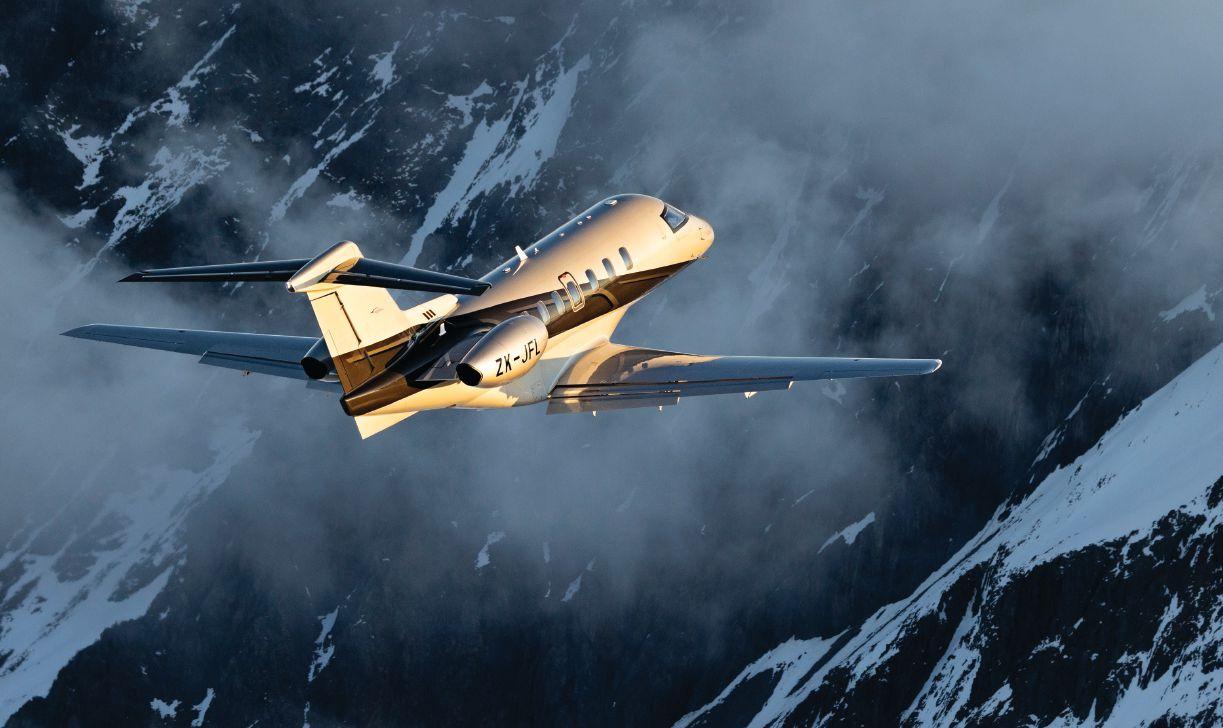
off-market increased significantly, meaning, that without the right broker, a customer may never know about their ideal aircraft option.
The versatile Pilatus PC-12 single-engine turboprop is one of the world’s mostpopular, entry-level aircraft. As the exclusive Pilatus dealer in Canada, Levaero holds a wealth of experience working with first-time customers.
“It doesn’t matter whether this is your first time, or if you are a seasoned buyer looking to upgrade your aircraft, the bottom line is that an aircraft is a tool,” Kuliavas says. “It will not only make your current travel more efficient, but it will allow you to access those destinations that have been put on the side burner because they are inconvenient to reach; or require multiple airline connections – potentially adding days to a trip. The right aircraft allows you to maximize the efficiency of your time.”
In addition to its team of aircraft brokers boasting more than 75 years of combined aircraft acquisition and sales experience, Levaero has internal expert market analysts who actively track various
aircraft markets to understand not only what is listed and what is coming to market, but also to offer a unique understanding of market trends, pricing patterns, and opportunities not available elsewhere. In 2023, Levaero released Canada’s first-ever market intelligence report, focusing solely on the Canadian aviation market, including trends in aircraft ownership, detailed analysis of market activity and pricing trends. The 2024 edition of the market report was released in May.
Once a selection of aircraft has been evaluated, and a preferred unit settled on, a Letter of Intent (LOI) is sent to the seller. This document sets out terms and conditions of a buyer’s offer, including arrangements for prepurchase inspection, among other items.
“We live in a market where sellers are free to ask whatever they want for their aircraft. But that is all it is, an ask,” Kuliavas says, as a skilled aircraft negotiator of more than 18 years. “Our team works with proprietary real-time market data to understand comparable transactions, along with make and model trends, so that

our customers are armed with the information they need to make good-value purchase decisions.”
“The Aircraft Purchase Agreement (APA) is the document governing your aircraft transaction. It should always be reviewed by a lawyer with aviation expertise, as there can be legal nuances unique to aircraft transactions,” Kuliavas says. “An aviation escrow service is often used as a neutral third-party to handle the financial and documentation requirements. This is especially the case with cross-border transactions. We are sourcing aircraft from around the world, and that can bring with it various challenges.”
For a customer-focused broker like Levaero, the final step of aircraft acquisition is just the beginning of a long journey. “We always look at an aircraft purchase as part of a long-term relationship and not a one-off transaction,” Kuliavas says. “Throughout the course of their ownership, customers will have questions or may be looking for added support. We are here to help them navigate all aspects of aircraft ownership and we are big proponents in building long-term relationships.”

BY PHIL LIGHTSTONE
April 1, 2024, marked the 100th anniversary of the Royal Canadian Air Force.
The Centennial milestone allows the Royal Canadian Air Force (RCAF) to honour its distinct heritage, recognize its people and generate excitement for its bright future. This is an opportunity to fuel internal and external support in the RCAF that instills pride, while creating an enduring legacy that propels the institution forward into its next century of service.
Canada’s Air Force will be showcased in a past, present and future context throughout the year with a focus on highlighting contributions to national safety
and security, international peace and global stability. When formed in 1924 Canada’s Air Force had 62 permanent members.
The RCAF provides Canadians with air defence, maritime patrol, search and rescue, air mobility and sustainment, aerospace control and space capabilities to support operations at home and abroad. The RCAF provides security at home through NORAD and working with NATO allies and partners to maintain peace and stability across the globe.
The RCAF’s current fleet of 24 different aircraft types are split into various roles, including: Air demonstration; fighter; maritime aviation; search
and rescue; tactical aviation (helicopters); trainers; and transport.
“Less than a century ago, at the dawn of the aviation age, early, kite-like aircraft quickly developed into powerful, indispensable weapons,” wrote Hugh Halliday of the Canadian War Museum, as a backgrounder about Canadian military history. “The impetus was the First World War (1914-1918), which broke out only a decade after the first controlled flight by a powered machine. During that conflict an estimated 22,800 Canadians joined the British flying services. Some of them, like William Bishop, William Barker, and Raymond Collishaw, were among the top-scoring aces of the war and became household names.
“Ultimately, the government created a Canadian Air Force in 1920 as part of the peacetime
military establishment,” continued Halliday in his historic dispatch. “At first, members served on only a part-time basis but, by 1924, it had evolved into a small, permanent professional organization, the Royal Canadian Air Force (RCAF). The new RCAF trained sporadically for war, conducting exercises with warships and militia units, applying First World War tactics.
“The Armstrong-Whitworth Atlas army cooperation aircraft acquired in 1927, for example, was certainly more powerful than types developed in 19141918, but its crews practiced the same skills of artillery spotting and short-range reconnaissance that had been the essence of First World War air power,” continued Halliday. “Among their most common tasks was to take young militia officers up for short flights, to show them how readily ground troops could be
located from the air and to instill in them the need to camouflage their units from observation and attack.”
The tip of the sword from the public’s perspective is Canada’s Snowbirds, formed in 1971. The Snowbirds are part of 431 Air Demonstration Squadron and have become a Canadian icon. Pilots, technicians (aviation, avionics, aircraft structure and supply), mobile support operators, resource management support clerks, an engineering officer, a logistics officer and a public affairs officer representing all three elements (Army, Navy and Air Force), work as a team to bring thrilling performances to the Canadian public.
Serving as ambassadors of the Canadian Armed Forces (CAF), The Snowbirds demonstrate a high level of skill, professionalism, teamwork, discipline and dedication inherent in the men and women of the CAF.
The RCAF’s 431 Squadron has flown a variety of aircraft over the past 100 years, including: Vickers Wellington, HandleyPage Halifax, Avro Lancaster, Canadair (North American) F-86 Sabre,CF-18, and the CT-114 Tutor. You might be wondering how the team got its name. A Name the Team contest was held at the local base elementary school in June of 1971. Doug Farmer, a Grade 6 student was the winner. Farmer was able to join the team on a media ride at BC’s Abbotsford Airshow in 2000.
The RCAF has been working quite hard for the past four years with the creation of a small but mighty team, focusing on the centennial. Celebration events include: Gaming and e-sports; the RCAF run; air shows; RCAF centennial symposium; illuminations; trees of heroes; the RCAF Ball; eclipse Canada; and Winterlude to name a few. Checkout the RCAF’s Centennial event page for an up-to-date schedule (rcaf2024arc.ca/ events-landing).
The RCAF will be participating in a variety of municipal, provincial and federal events, including local air shows, aerospace museums and other events. The desire to contribute to the celebrations spread through the RCAF, with Sgt Mark Shum, an image technician in Ottawa, designing a poster recognizing the RCAF’s personnel in 2023. This unique aircraft mosaic features every aircraft silhouette to have been flown by the RCAF. The aircraft silhouettes are in formation to represent a maple leaf. Sgt Shum was not part of the Centennial team but felt compelled to create this unique peace of artwork.
Master Corporal Kevin Kelly, stationed in Bagotville, QB, created a design for the RCAF Centennial CF-18 Demo Jet Paint Scheme competition. His winning design
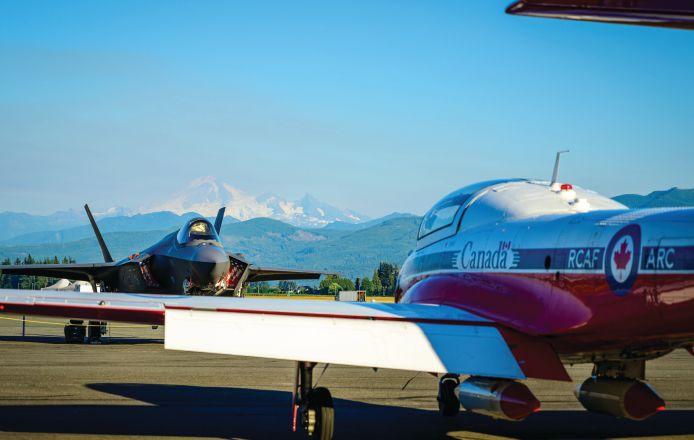
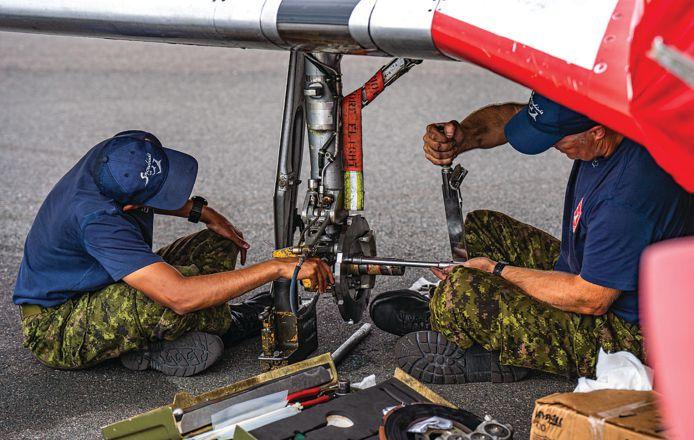

incorporates four themes: Air power, personnel, innovation and technology, and history and heritage. Air Power is depicted through highlighting the RCAF’s six mandates on the left V-Stab, symbolizing aerobatics, fighters, maritime aviation, search and rescue, tactical aircraft and transport. Each role is illustrated by the silhouette of a corresponding aircraft. Personnel are presented as silhouettes, a non-commissioned member, an officer, and a pilot are displayed allowing admirers to choose the gender and nationality of the person depicted so that everyone can identify within the RCAF.
Innovation and Technology is a central theme of the design and is represented in the top view image which includes a design that features gears, a binary pattern and electronic circuits, emphasizing the significance of these technologies for the operation of RCAF aircraft. The binary numbers indicate “RCAF 2024” and “ARC 2024”, an excellent design suggestion from Major Michael Kallio.
History and Heritage was designed with the assistance of RCAF Centennial Historian, Major Mathias Joost (Retired), with aircraft silhouettes on the right V-Stab including the Starfighter, Sabre, North Star and Lancaster.
businesses, cities and landmarks across the world were to be illuminated in Air Force Blue to celebrate the occasion. In commemoration of the women and men who have, and continue to, serve Canada both at home and abroad, and in recognition of the positive impact that the RCAF has had worldwide, the RCAF invited Canadians to join in by illuminating their residence, place of work, or elsewhere in blue to show support. People were asked to share a picture on social media using the hashtags #RCAF100 and #100YearsOfFlyingBlue. One of the goals was to break a Guinness World Record for the most landmarks illuminated within 24 hours. The RCAF is currently in the process of validating its record attempt.
Colonel Maggie Jacula, RCAF 2024 Campaign Manager, was dedicated to managing the RCAF’s Centennial activities for the past three and one half years with a team consisting of nine staff inclusive of the RCAF’s Canadian Moral and Welfare Services.
“Our team, while small is mighty, planning, supporting and delivering a variety of activities mission critical to the build-up to April 1, 2024, and the celebrations taking place during the reset of the year,” Colonel Jacula reports. “We really want people to know about the proud history of the RCAF,
For over 35 years, AeroCourse has been a leader in advanced aviation training in Canada. We provide advanced aviation training and develop and publish manuals and workbooks both hard copy and digital to assist pilots gain the knowledge they require for their IFR and ATPL. We offer IFR and ATPL seminars, IFR online courses, and hold specific advanced aviation courses inconjunction with airlines, colleges and flight schools. Our instructors are professional pilots and flight examiners with thousands of hours experience. We pride ourselves on high quality materials and training.
The skills, dedication and expertice of our instructors set them apart. They have an incredible knowledge base and have broad expeience, flying for Canada’s top airlines. They are dynamic and enthusiastic. Having exceptional instructors, ensures a productive learning environment and contributes to our student’s success
involved in air and space in Canada. A lot of times when you think of the Air Force, you think of airplanes and pilots. Without a doubt, airplanes and pilots are very important to the Air Force, but in order to achieve our missions, there are so many other trades that are involved.”
The team is collaborating with Canadian Geographic to help produce a documentary, entitled Wings of Honour, highlighting 100 years of Canadian flight, including interviews with Major Dee Brasseur, one of Canada’s first female fighter pilots (Jane Foster was the other). The documentary will air on CPAC on July 1, 2024. The partnership with Canadian Geographic began in 2021, by leveraging existing RCAF events.
Currently the RCAF has: 11,668 men and women serving in the Regular Force; 2,004 Reserve Force members; 15 wings; 38 flying squadrons; and 23 non-flying squadrons. The number of pilots and aircrew is on a need-to-know basis. It’s a bit challenging to document who has the most hours in the air. However, Major Bruno Paulhus, as a navigator, has flown 9,625 hours on the CC-130, anecdotally there are aircrews with 10,000 hours. It is important to note that fighter and rotary-wing aircraft hours will be lower than medium-heavy transport and maritime patrol aircraft.
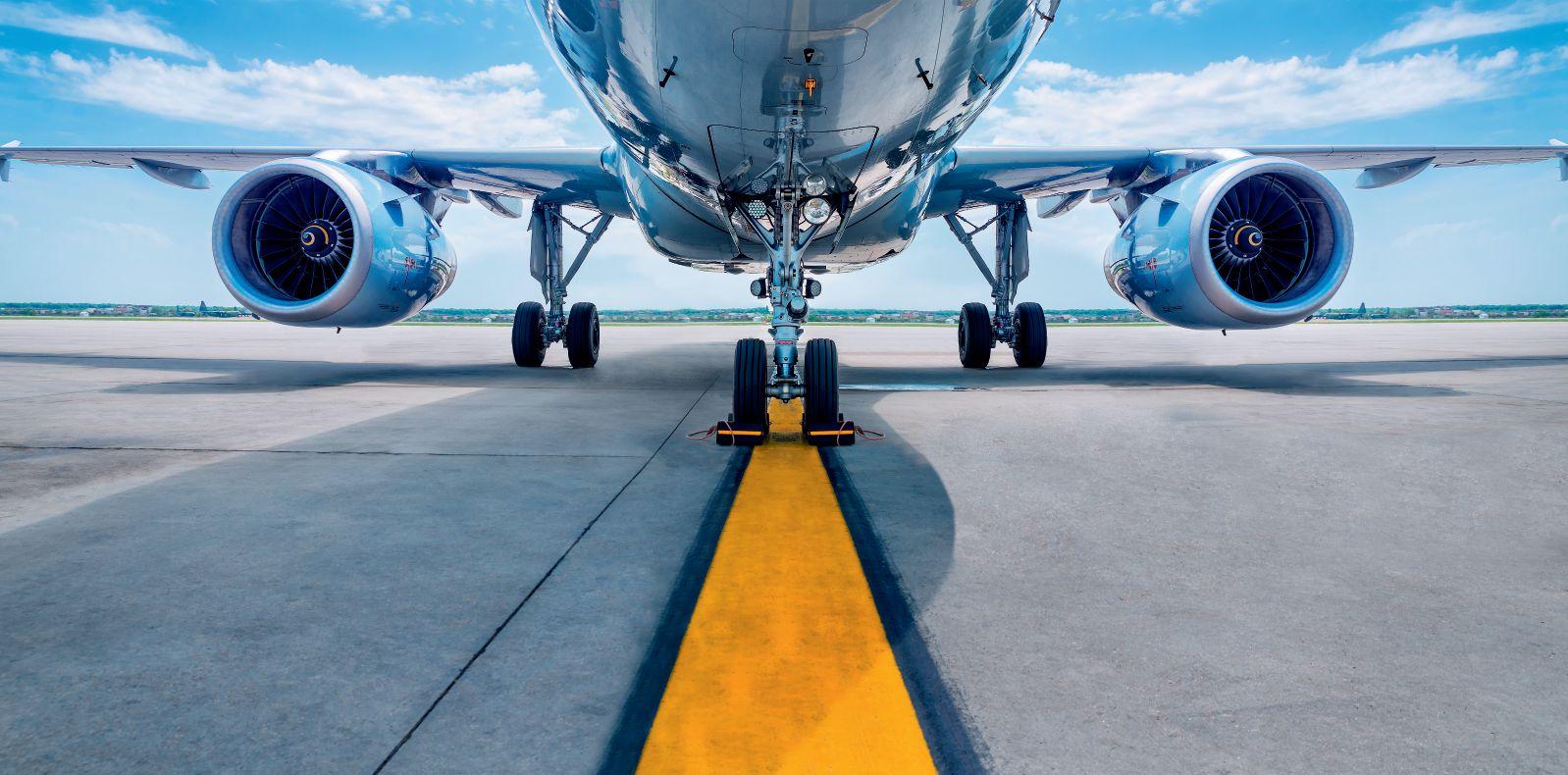


Vote for your favourite Fixed Base Operator in the 2024 edition of Canada’s Top FBO program. Voting in the annual survey program continues until July 10, 2024. The survey results also provide the program with the Top Three FBOs by region and the country’s Rising Star, recognizing one operation that received the highest number of votes, year over year, among all others. The survey also asks questions to discover what FBO and aircraft attributes matter most customers.
vote today
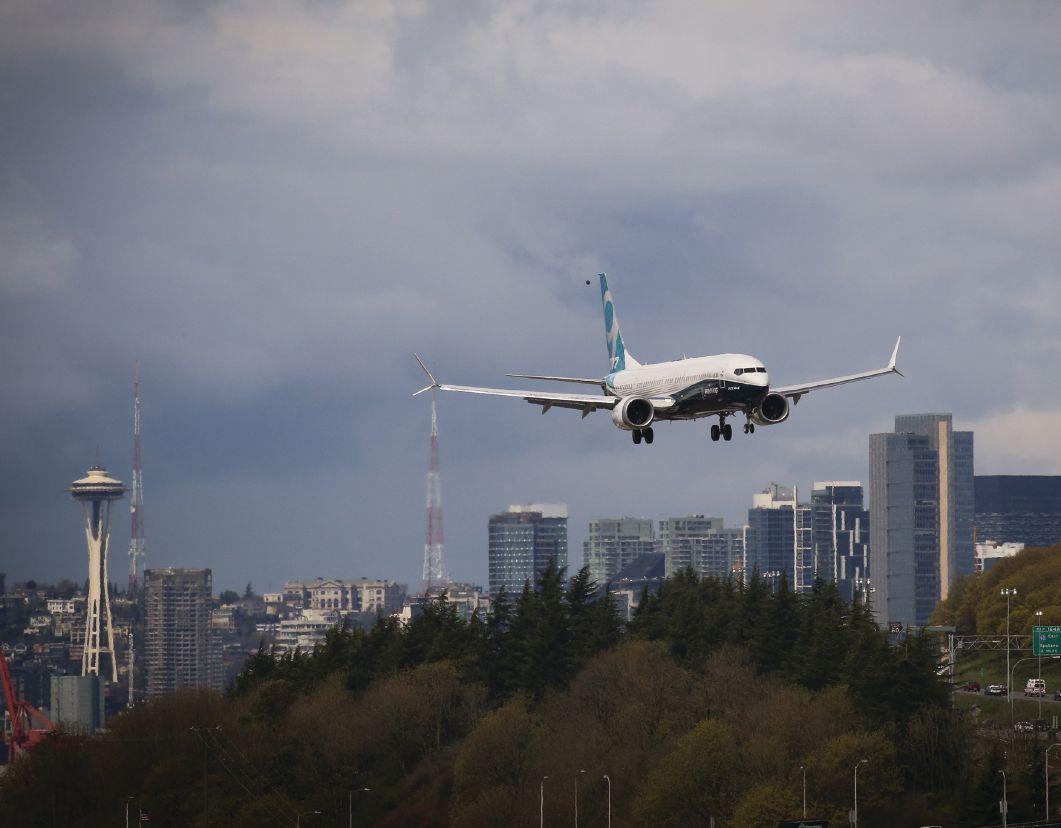
BY DAVID CARR
The sun is setting on Dave Calhoun’s time as chief executive at Boeing. After years of trying to shift the culture at Boeing and restore its reputation as a world beating engineering firm, Calhoun announced he would be stepping down in January as part of a larger management shakeup. He is in favour of an internal
succession. But whoever is hired, the todo list is long and challenging, perhaps most notably including the launch of a new airplane and restoring confidence in the brand.
For Boeing, however, the hits keep coming. A second whistleblower, a Boeing engineer, has cast doubt on the structural integrity of Boeing 777 and 787 jets. Boeing
was swift to push back. David Koenig of The Associated Press reported how two Boeing engineering executives went into detail to describe how panels are fitted together, particularly on the 787 Dreamliner, suggesting the 787’s carbon-composite skin is nearly impervious to metal fatigue that weakens conventional aluminum fuselages.
The 787 has been tested through 165,000 flight cycles with no signs of composite airframe fatigue. There are 1,100 Boeing 787s operating globally since the airplane entered service in 2012. The most worked 787 in service has accumulated 16,500 flight cycles over 12 years.
But frustration with Boeing has boiled over since the Alaska Airlines incident in January, where four missing bolts caused a panel door to blow out from the fuselage. Since then, Boeing has been under the microscope, including investigations by the Federal Aviation Administration (FAA) and U.S. Congress, and angered airline executives saying the quiet bits out loud.
On April 24, Boeing reported its first quarter results highlighted by news it lost US$355 million on falling revenue, which


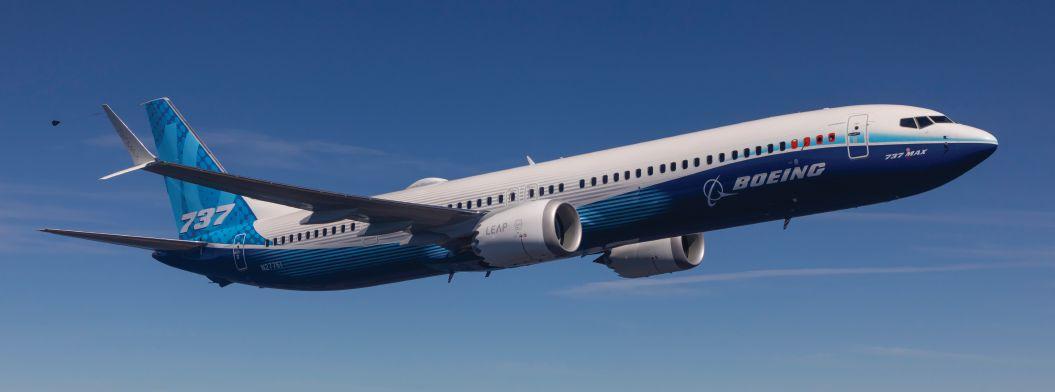
promoted Calhoun to note the company is focused on fixing manufacturing issues, not the financial results. Koenig referred to a memo from Calhoun to employees: “Although we report firstquarter financial results today, our focus remains on the sweeping actions we are taking following the Alaska Airlines Flight 1282 accident,” Calhoun told employees in a memo Wednesday.
Meanwhile, the clock ticks down on the 90-days the FAA gave Boeing at the end of February to address “systemic quality control issues”. The regulator has also limited 737 production to 38 aircraft a month. Boeing has slowed production further as it focuses on quality, sapping cash flow and forcing stretched airlines to cancel routes, reduce frequencies and, in limited cases, pull out of markets altogether.
In the first quarter earnings call, which many analysts felt was better than expected, despite the revenue loss, Boeing did not expect 737 MAX production to stabilize before the third quarter.
To be awarded at ATAC'S 90th Canadian Aviation Conference and Tradeshow Vancouver - Nov. 5 to Nov. 7, 2024
e Award recognizes and honours a ight instructor, either xed or rotary wing, who has made a signi cant contribution to safety in Canada, also having demonstrated superior teaching skills.
Jane & Rikki Abramson established this Award in 2003 through Air Transport Association of Canada, and will personally present this year’s award. e recipient’s name will be engraved on the prestigious perpetual trophy and entered in the associated logbook, both on permanent display in the Canada Aviation & Space Museum in Ottawa.
e Award is Generously Sponsored By:


Nominations can be made at any time throughout the year, prior to the deadline of September 14th, 2024
For entry requirements contact Jane Abramson, Founder & National Administrator
Email:
janeabramson@videotron.ca
www.dcamaward.com
The company believes that its 787 production, which has been plagued by the same supplier issues that have impacted Airbus, will return to five aircraft per month later this year and that Boeing will have “largely delivered” its inventory of 737 and 787 jets by the end of the year, which will be a welcome boost to cash flow. Boeing financial results exceeded analysts expectations, but the earnings report has also highlighted a widening gulf with rival Airbus.
In January, United Airlines chief executive Scott Kirby sent shock waves across Boeing, describing the grounding of the 737 Max 9 as the “straw that broke the camel’s back.” A three-week grounding of the Max 9 cost United, the largest operators of the type, US$200 million. Stan Deal, CEO of Boeing’s commercial airplanes division, apologized for the Max 9 grounding in a statement: “We have let down our airline customers and are deeply sorry for the significant disruption to them, their employees and their passengers. We are taking action on a comprehensive plan to bring these airplanes safely back to service and to improve our quality and delivery performance.”
Kirby also announced that United Airlines has removed the long-delayed Max 10 out of its 2025 planning cycle. (The 737 Max 7, the smallest airplane in the Max family is also in certification limbo due to de-icing issues.)
The Max 10, which has also been ordered by WestJet, is the largest variant in the 737 Max family. The aircraft, which was expected to enter service with United in 2020 will likely not be certified before 2025. United has stabilized fleet deliveries between 2025 by converting some of its Max 10 order to the smaller Max 9, and will lease 35 Airbus A321neos.
The aircraft manufacturing duopoly between Boeing and Airbus and full order books for narrowbody jets gives the new chief executive of Boeing time to manoeuvre. Airlines have no place else to go. But a strategy based on Airbus-can’t-build-airplanesfast-enough is not sustainable. There were reports Airbus was searching for delivery slots to support a United order should the airline cancel the Max 10 outright. That appears less likely. United has an option to restore Max 9 orders to the Max 10 once the variant is certified.



It is clear that Boeing needs to get a jump on Airbus by introducing a new mid-market airplane sooner rather than later. Speculation is on a 250-seat replacement for an ageing global fleet of 757, 767 and A310 airplanes. This addition would provide Boeing with a direct competitor to the Airbus A321neo, which has been outselling the Max 10 at a ratio of about five to one.
Calhoun has pegged the cost of a new airliner program at US$50 billion, while industry watchers have put the price tag closer to US$30 billion. Of course, this is still an eye-watering amount for a cash-strapped company with production and certification problems. Boeing is also in talks to re-acquire and integrate its

The Bombardier Centre for Aerospace and Aviation at Downsview Campus is a dedicated training ground for aerospace and aviation mechanics. With focused courses, cutting-edge equipment and industry professionals guiding our programs, your aircraft are always in good hands with a Centennial College graduate.
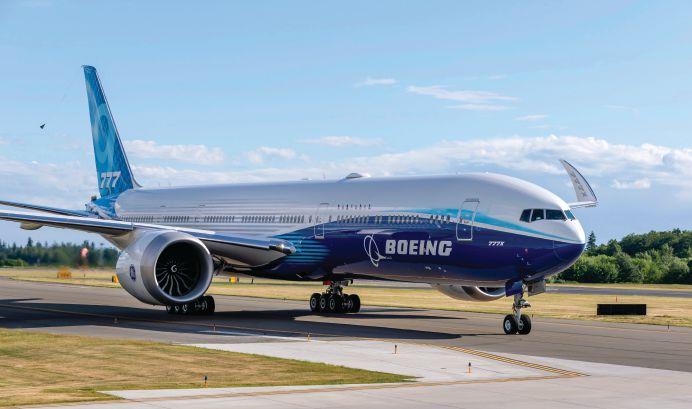
troubled supplier, Wichita-based Spirit AeroSystems, which it spun off in 2005. A deal is expected to be reached in Q2.
It has been reported that Boeing will need free cash flow of at least US$10 billion a year, a target it does not expect to reach until 2025 or 2026 at the earliest and will require production of 50 737s and 10 787s a month.
There are also concerns that if launched
too early, the new airplane will eat into 737 sales, especially for the Max 10, or whether Boeing, which has not launched a new airplane since the 787 in 2004 has the engineering and institutional knowledge to bring a clean-sheet design to market. It is one of the reasons why some in the industry are calling for the next chief executive to have a background in engineering. Enter Japan? Despite the setback of the

Mitsubishi SpaceJet regional airliner, the Japanese government intends to break out of its role as tier one suppliers for programs such as the 777 and 787, a build a home-grown airliner for the growing narrowbody. In March, the Japanese Aircraft Development Corporation (JADC) announced plans to collaborate with the private sector on a next-generation passenger aircraft, which would enter service around 2035.
The US$27 billion project will study new propulsion technologies such as hydrogen fueled engines, which are unlikely to be available by the time Boeing needs to launch a mid-market jet, but it will certainly be incorporated into a future 737 replacement. It is an ambitious strategy, and Japan plans to lean heavily on the missteps made in the development of the SpaceJet.
Still, a more incremental approach might be called for. Japan is open to a partnership with a foreign manufacturer; and Boeing was reported to have been working with JADC on the original midmarket airplane.
Japan is not the only country Boeing and Airbus will have to keep an eye on. China’s COMAC C919 narrowbody jet was on display at the recent Singapore Air Show, whereas any version of the Max was notably absent. Commercial aviation is a long game. The C919 and its heavy reliance on western technologies, including engines and avionics, is not in the same arena as the A320 and Max family.
But China is further along than Airbus was 55 years at the 1969 edition of the Paris Air Show, where the pan-European manufacturer was dismissed as another European state vanity project. China will have not poured US$78 billion to build a domestic airliner industry and stop at a first generation C919.
Under new management, 2025 should be a watershed year for Boeing, as deliveries of the Max and 787 ramp up, and much needed cash starts to flow back to the manufacturer. A highlight for the year will be first deliveries of the 777-9, the first and largest of the 777x family of new generation widebody jets, although there is already speculation that the date might be pushed back to early 2026.
The 777 is seen as a long-haul game changer, identifiable by its cutting-edge, all-composite wing that features folding wing tips that enable improved efficiency in the air and a shorter wing span at airports on the ground. Boeing has orders for 435 of the 777x, including 205 from launch customer Emirates. After years of playing catch up, Boeing may finally be able to look forward. | W
Vision

Mission

Notre
Notre


BY PHIL LIGHTSTONE
The implications of installing counterfeit aircraft parts onto aircraft could be life threatening. Sadly, unscrupulous bad actors, motivated by greed, are willing to do unscrupulous things while chasing high-margin dollars. The problem has many elements: Counterfeit parts, like buying a Rolex knockoff watch for pennies on the dollar; forged paperwork (like Form 8130-3); used components purported to be new; Original Equipment Manufacturer (OEM) components installed without Federal Aviation Administration (FAA) paperwork; and used OEM parts returned to the OEM under warranty, but in fact are no longer under warranty.
The most high-profile accident involving fake parts occurred on Sept. 8, 1989, when Partnair Flight 394 carrying 55 people from Oslo to Hamburg crashed into the sea. Investigators determined that three counterfeit bolts and sleeves where installed, which were incorrectly heat-treated during their manufacturing. The bolts caused the tail section of the Convair CV-580 turboprop to vibrate violently and eventually tear loose, causing the vertical fin and fuselage to separate. The counterfeit bolts and sleeves had excessive wear, causing the tail to vibrate for the previous 16 flights and the accident flight. An outcome of the tragedy was the U.S. introducing reforms in the aviation parts industry and more aggressively pursuing prosecutions leading to over 150 criminal convictions and US$47 million in restitutions and fines.
The aviation industry relies on the honesty and trust of the supply chain participants. However, the adage of Trust but Verify ensures that discrepancies caused by bad actors are caught before the parts or components are installed on an airframe. Since 2010, major OEMs have seen that some bad actors have used rotable parts repair and overhaul facilities to launder suspect parts. OEMs and the FAA have been working together to deal with these challenges both from a regulatory and enforcement perspective. Embargoed countries have forced Russian airlines to find spare parts on the black market or from grounded aircraft.
Based on analysis of customs records, Reuters reported: “All told, at least US$1.2 billion worth of aircraft parts flowed to Russian airlines from May last year – when most U.S. and European trade curbs and export bans over Ukraine were in force – to the end of June this year (2023).” With OEMs and the FAA cooperating, some supply company’s business licenses have been revoked.
Transport Canada (TC), FAA and European Union Aviation Safety Agency (EASA) are all aware of this problem, with bad actors using different schemes to cheat the system. The FAA has setup a Suspected Unapproved Parts (SUP) program and website (faa.gov/aircraft/ safety/programs/sups), which has been tracking SUP since 1996 and is using FAA Form 8120-11.
In 2002, TC issued alert AL2002—01, advising all owners, operators, maintenance shops and parts distributors of the possibility
of agencies trafficking in unapproved parts. TC had received information from the Italian Civil Aviation Authority, Ente Nazionale per l'Aviazione (ENAC), that Panaviation s.r.l., an unapproved organization based in Rome, has supplied aeronautical parts worldwide, that may have been altered and/ or with their history misrepresented. ENAC has advised TC that any part originating with Panaviation should be considered unairworthy. Canadian Aviation Regulations (CARs) require that aeronautical products conform to their design standard, have proper certification, and be in a safe condition for use.
TC strongly recommends that the Canadian aviation community should inspect their aircraft records, parts receiving records and/or parts inventories to determine if parts originated from Panaviation have been received or installed. TC advises that it has been reported that Panaviation is commercially linked with other unapproved organizations distributing parts from Italy, allegedly New Tech Italia and New Tech Aerospace. If any parts linked to these organizations are found installed on an aircraft, appropriate action should be taken in relation to the safety implications associated to their operation. If these parts are found in existing parts inventories, TC recommends
that they be quarantined until a determination can be made regarding their eligibility for installation. TC advises that these parts have been sold by Panaviation to various entities in the United States and Europe.
EASA encourages the reporting of any information concerning discovery of subject parts. EASA was tasked with the establishment of a mandatory reporting system, based upon Article 4(4) of regulation 376/2014 of the European Parliament. Regulation 2015/1018 requires that “the use of products, components or materials, from unknown, suspect origin, or unserviceable critical components (SUP)” must be reported.
A reported SUP case may not be resolved by EASA and the National Aviation Authorities mainly due to the lack of required information: a SUP with an allegedly forged EASA Form 1 comes from a non-EU maintenance organization, supplier or distributor and it is difficult to obtain feedback from the local aviation safety authority; the origin of the SUP is impossible to determine; an allegedly forged EASA Form 1 has been sent to a potential buyer of a part (not in the supply chain yet) for pre-assessment, indicating that an SUP case might exist for the concerned part; and a part was unlawfully removed, e.g. from a maintenance
facility, and it can be expected that it will appear on the market with forged documentation or untraceable history.
The goal of SUP information provided by operators and repair stations to EASA’s reporting website is to raise awareness within the European aviation industry of SUPs which they might encounter. In addition to mandatory reporting required under local airworthiness regulations, EASA requests that operators report direct via the ECCAIRS reporting portal (e2.aviationreporting.eu/reporting).
As an example, EASA has become aware of an unapproved part with a forged FAA Form 8130-3.
An Italian approved maintenance organization received from a supplier a new DUKES Pump Fuel Booster with P/N 4140-00-17 (P/N CESSNA C291504-0101) and the related authorized release certificate FAA Form 8130-3 with Form Tracking Number 1534369 dated 20-Apr-2018. The FAA-approved aircraft manufacturer, that supposedly had issued the authorized release certificate, has confirmed that the FAA Form 8130-3 certificate provided with this part is not an authentic document.
Bloomberg’s investigative journalists have been reporting on a case starting in the spring of 2023, when engineers at TAP
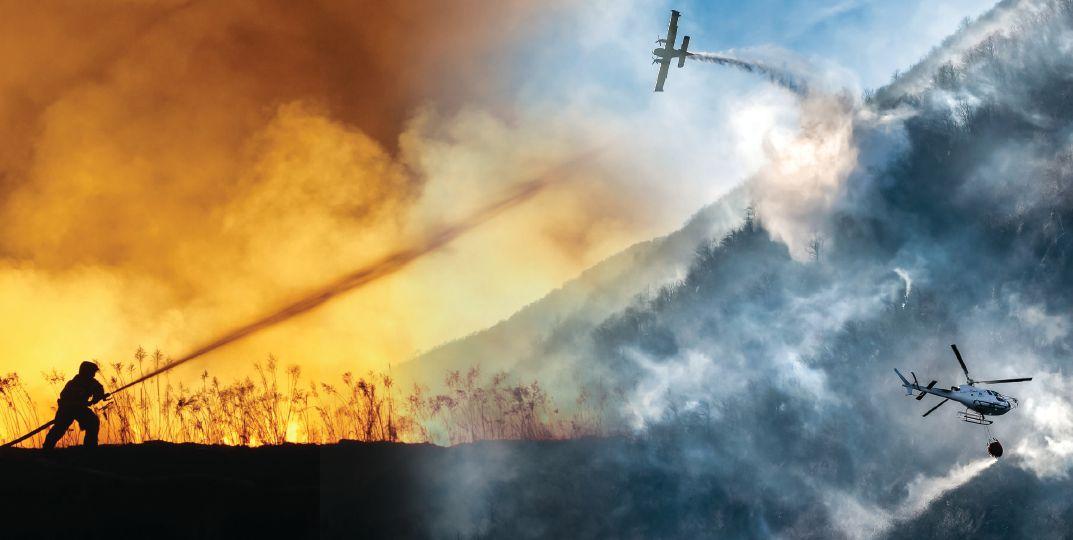
Air Portugal’s maintenance subsidiary found a replaced damper with signs of wear in a CFM56 turbine engine. The paperwork had identified the part as new from Safran SA, the manufacturer of the engine. Safran determined that the paperwork had been forged. The signature was not of a Safran employee and the purchase order numbers were not in their system. Since October 2023, Safran and General Electric have found more than 90 other certificates that have been falsified, with fake parts found in 126 engines.
These parts are linked to a London UK distributor, AOG Technics Ltd. While engineers are trained to spot components of dubious origin, “it’s always shocking when we have one in front of our eyes,” a person familiar with the revelation, who asked not to be identified, told Bloomberg, as shared in its report entitled Ghost in the Machine. “In some cases, AOG allegedly sold refurbished used parts with paperwork claiming they were brand-new, potentially netting huge profits in the process. And the company may have done so by exploiting what critics say is a decades-old blind spot in the aviation regulatory system” reported Bloomberg. GE and Safran are litigating AOG in a London UK court. The CFM International engine-making partners have sought a court order for the documents relating to every single sale of products. AOG produced the records on October 4,2023, providing CFM new potential leads. EASA said that it has no regulatory power to investigate AOG as suppliers are not regulated.
EASA has implemented a system to track and report on counterfeit aircraft parts, with accompanying forged documentation. Aircraft owners, operators, maintenance organizations and distributors are requested to inspect their records to determine whether aircraft or engine parts have been obtained from AOG Technics, either directly or indirectly. For each part obtained, contact the approved organization identified on the Authorized Release Certificate or ARC (e.g. FAA 8130-3 or EASA Form 1) to


verify the origin of the certificate. If the approved organization attests that the ARC did not originate from their organization, then any affected parts should be quarantined to prevent installation until a determination can be made regarding their eligibility for installation. If a part with a falsified, ARC is already installed, then it is recommended that the part be replaced with an approved part.
The FAA will issue Unapproved Parts Notification circulars (UPN) which can be found at faa.gov/aircraft/safety/programs/sups/upn.
The latest UPN number 2024-AAE-EHL-20230608-303 documents “Articles manufactured and/or distributed by Southern Aero, LLC, for installation on Franklin Aircraft Engines, articles such as cylinder liners, valve springs, piston rings, hardware for cylinders and overhaul gasket kits. Information discovered during an FAA Suspected Unapproved Parts (SUP) investigation revealed that between June 2010 and present, Southern Aero, LLC, produced and sold numerous articles for installation on Franklin Aircraft Engines without the approval and authorization of the FAA and FAA design holder.”
The FAA UPN further states: “FAA regulations require that typecertificated products conform to their type design. The FAA encourages aircraft owners, operators, manufacturers, maintenance organizations, and parts suppliers and distributors to inspect their aircraft and/or aircraft parts inventory for any articles produced and/or sold by Southern Aero, LLC. If these articles are found in existing inventory or installed in an FAA type-certificated aircraft, the FAA recommends that they be quarantined to prevent installation or use until a determination can be made regarding their eligibility for installation or replaced with FAA-approved articles.”
In a general aviation (GA) context, the problem of using uncertified aircraft parts and components takes on a different complexion. With some GA aircraft dating back to the 1940s, 50s and 60s, some parts are no longer manufactured and the OEM no longer in business. For owner operators who need a part which is deemed unobtainable, the owner working may choose to use an uncertified part. John Leggat, Vice President, Leggat Aviation Ltd, reports: “Some owners may choose to purchase undocumented aviation parts from sources like e-Bay or salvage yards.
APPLICANT MUST MEET THE FOLLOWING:
• A valid M1 or M2
faulty systems to determine a course of rectification
• Track and plan maintenance activities, and coordinate with Dispatch
• Maintain aircraft records using computerized tracking system
• Supervise junior engineers and apprentices, as required
• Ensure all paperwork for assigned tasks is complete and accurate before submitting
• Ensure all maintenance alerts and memos are read, understood and complied with
•
• Carry out the applicable elementary servicing release of an aircraft as authorized to do so by their individual Shop Certification Authority (SCA)
“Upon review, the two parts appear to be identical, however, without paperwork, understanding the history of the part (i.e. hours in service, when it was removed and the aircraft it was removed from) will be challenging and the part is not eligible for installation on a certified aircraft,” continued Leggat. “Should the part be installed, the owner bears the responsibility and the Certificate of Airworthiness for the aircraft is not valid. Realistically these aircraft should be moved to the owner-maintenance category, removing the responsibilities of airworthy certification for all.”
In the U.S., shady tree A&Ps have no regulatory obligation to use certified and traceable parts. The FARs 43.13-a and -b describe how an A&P will perform maintenance, alteration or preventative maintenance on an aircraft and does not specify the use of certified aircraft parts. FARs 43.13(c) discusses the obligations of air carriers operating under the provisions Part 121 or 135 and Part 129 operators. Mike Busch, CEO of Savvy Aviation Inc., reports: “A&Ps providing services may choose to only use certified parts to ensure that they are not carrying contingent liability, thereby pushing responsibility for the part to the supplier. An A&P can use an uncertified shop to create or repair a part, under their supervision, but again, the A&P will hold the liability, which is something they are usually not keen about.”
It is challenging to determine just how widespread is the contamination of aircraft with counterfeit parts and documentation. A determination of a counterfeit part may occur during routine maintenance when purported new parts are seen with excessive wear. This requires that the AMEs (or A&Ps) have eagle eyes and have been educated on this issue of counterfeit parts. With millions of parts in a modern jetliner, finding counterfeits is like finding a needle in a haystack. The outcome, however, can be obviously deadly. | W

The aviation industry cringes when a new budget is tabled. Over the past twenty years we have come to expect a multitude of measures, including new fees and charges, and little or no support, or even reprieve, for the Canadian air transport industry.
Last year’s budget announced increases of 33% in the ATSC that just came into effect this May 1. This went largely uncommented as it was old news. Smuggled on the back pages of the 2023 Budget Implementation Act was an amendment to the Passenger Protection Law which did not undergo valid consultation before being legislated. The result is that the CTA is now stuck with a legislative framework that was not thoughtfully drafted and void of sound knowledge or real concern as to its impact on the air transport industry and the cost of flying in Canada. Serious issues that require knowledgeable consideration and stakeholder consultation shouldn’t be dealt with through omnibus budget implementation acts as they are too often overlooked or cast aside in the rush to get the budget passed.
Surprisingly, this year’s budget had some good news for the aviation community in that the government committed to “invest at least $500 million in biofuels production under its green infrastructure investment stream”. We praise that effort. We are encouraged by this initiative in that the Government seems to have heard ATAC’s and other aviation associations calling for concrete measures if SAF goals of 10% by 2030 and 100% by 2050 are to be met. Of course, details of how much of that $500 million will target Sustainable Aviation Fuel remains to be determined. The price of SAF must be commercially viable or subsidized if the Government expects air operators to use it.
We look forward to more specific information on SAF investments. What kind of incentives are being considered? Will the federal government introduce SAF incentives to stimulate production investment in Canada and to allow Canada’s biofuels industries to compete against the US. SAF incentives are a critical element of a robust and comprehensive sustainable aviation policy to be further developed jointly by government and industry. As uncertainty over future revenues from renewable fuels production remains a high barrier to investment, a revenue certainty mechanism has to be introduced to reassure investors for a defined period of time, to drive investment in SAF production in Canada and to provide a transparent way to close the price gap.
The budget implementation act will most likely contain
important additional information and, hopefully, no unpleasant surprises. Budget language and announcement are one thing, ensuing action and its timing can be quite another.
The budget announcement is an encouraging start, but it is a modest first step considering the many urgent needs of our industry. Serious investments must be made to support the northern airport infrastructure, something that has been demanded for decades. Government investment is necessary as the user-pay model policy applied to this country’s aviation is not a viable option in the north with its sparse population, large land mass and unforgiving weather conditions. In the north and remote regions economic development and connectivity to Canada depend on weather reporting, published approaches, appropriate runway surfaces, including resurfacing, lighting and fencing. These essential infrastructure elements are often deficient in our northern and remote areas and will affect essential service levels.
The skilled labour shortage is at a crisis level in this country. Student visas and work permits for foreigners wishing to come to Canada for flight or AME training and possible employment need to be made available to help stem the skilled shortages in aviation. Our industry is heading towards major disruptions of air service if foreign aviation students are blocked or limited. Flight cancellations due to a shortage of maintenance personnel or flight crews are already everyday occurrences and will worsen. It is incomprehensible that blanket policies are applied across sectors without recognizing critical shortages.
Government loan guarantees for flight training, reasonable Air Passenger Protection regulations that don’t threaten the viability of regional air service, 5G radio frequency standards and necessary protections for aircraft operations that don’t threaten aviation safety in Canada, are major issues. The aviation industry demands immediate attention and action to avoid reaching a point where we will have to seriously cut air services to Canadians.
ATAC and its Members have been calling for governmentindustry collaboration to address these issues that make the air transport industry extremely vulnerable. The Transport Minister must champion our collective effort and rally other key departments to join in maintaining safe, world-leading and sustainable air transport services in Canada. ATAC and its Members have solutions to offer and are offering their full cooperation to the Government to address these major challenges.

John McKenna President and CEO

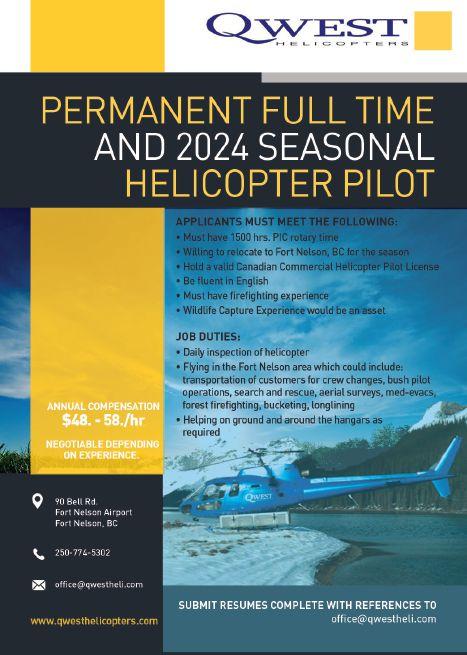
SEPTEMBER 7, 2024
Holiday Inn Burlington Hotel and Conference Centre
The one-day Canadian General Aviation Conference is designed to provide General Aviation pilots and aircraft owners, as well as flying enthusiasts and aspiring aviators, with access to leading suppliers and organizations of the sector, showcasing their newest technologies and services under one roof.






